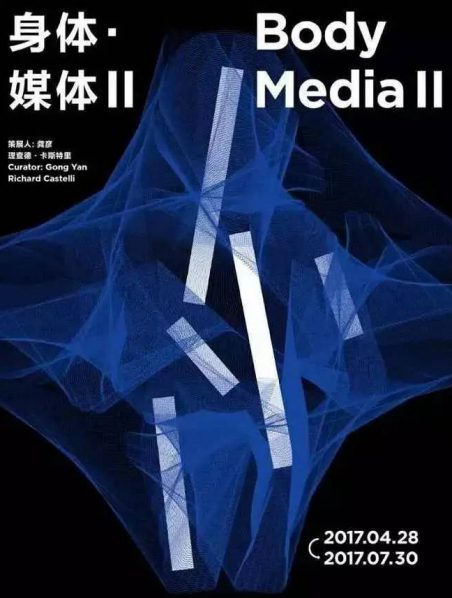
Body Media II will first incorporate PSA’s industrial space as a cold body and a segment of modernity. This cold body will use hot language and hot narration to guide visitors around internally like the circulation of blood, to test if space, artworks, and visitors can achieve uniformity in terms of languages and actions.
Body Media II continues the theme of Body Media, which took place at the Red Town Sculpture Center in 2007 and was mainland’s earliest international interactive media exhibition. 10 years ago, Body Media took place in two totally enclosed black boxes, and the sense of space was intentionally taken away, with bodies of visitors becoming keys to open projects in the sense of time. After a decade, when we re-look at “body” and “media”, they have gone beyond the relations of mirror or cooperation, and are leading to interesting performativity as they are now substitutes to each other.

3D Water Matrix,Ulf Langheinrich,Christian Partos,Shiro Takatani,2017,Installation with water and light
The 3D Water Matrix is composed of 900 electrovalves, each computer controlled, which form a square grid with 30 streams of water on each side. The result is a “liquid” video display where drops replace pixels, with a very low resolution (30 by 30 pixels/drops) but one to which gravity imparts a “real” third dimension.
The Matrix itself is not the work of art; it is rather the medium or the interface for the making of liquid creations. Thanks to this robotic machine, Christian Partos becomes a water sculptor and Shiro Takatani, a filmmaker, who creates animations using water drops that defy gravity. A new piece designed by Ulf Langheinrich completes the repertoire, and is based on a three dimensional recording of a real body in movement.

Shanghai Time,Mark Formanek,2007-2017,Performance and video installation
ZEE proposes a state of “Tabula Rasa” (Latin for blank slate), where one’s perceptual framework is first reset and then recalibrated. The audience will enter a space filled with extremely dense fog. Stroboscopic and pulse light filters through the fog in a soft and evenly dispersed manner, creating kinetic structures in constant flux. The audience can freely roam the ZEE space. The nature of the work instills an almost automatic process of slow motion. Suspended flexible ropes mark the available space and lead into and out of ZEE.
Shanghai Time is a performance lasting exactly 24 hours and is recorded on film. However, this film is much more than just the recording of an action – the recording of something that has taken place in the past – it is also a clock. A clock for use right now and for use in the future which, as each day goes by, extends further into the past, but is still up-to-date and punctual. It’s constructed in real time over a 24-hour period by 59 workers, taking 30 boards and 1,611 changes to complete.

ZEE, Kurt Hentschläger,2008,Immersive installation with light and fog
About the exhibition
Dates: 2017.04.28-07.30
Venue: Power Station of Art
Courtesy of the artists and Power Station of Art, for further information please visit www.powerstationofart.com.




























